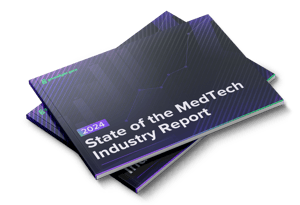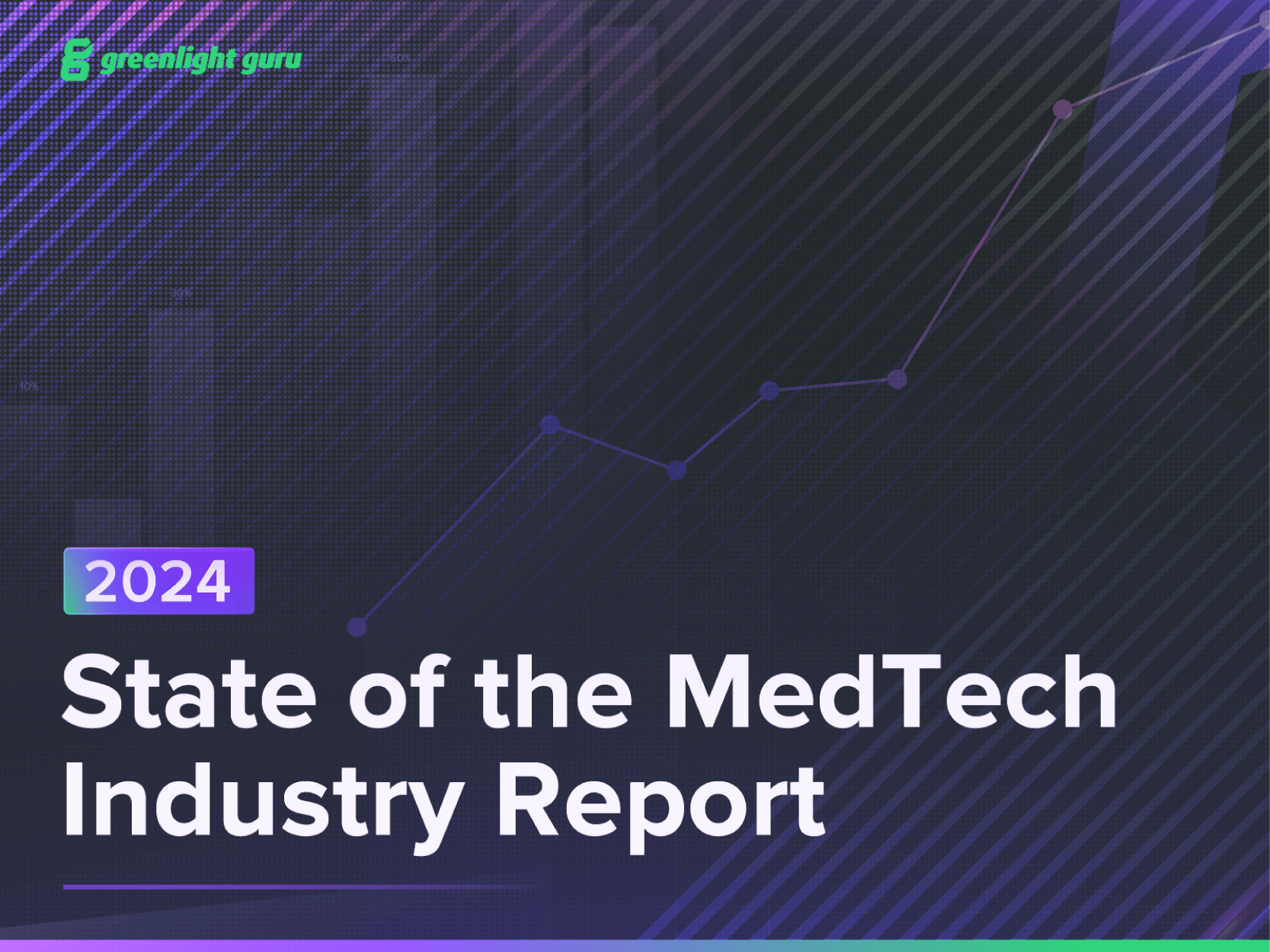
At Greenlight Guru, our annual State of the MedTech Industry Report offers a comprehensive view of our industry and the opinions and outlook of more than 500 MedTech professionals.
Every year, we focus part of the report on organizations that excel in some way—whether it’s high-quality outcomes, competitive market position, or talent acquisition. And this year, we decided to look closely at MedTech companies that excel in the realm of quality.
To figure out what these high-performing organizations do differently, we looked specifically at two groups of respondents in the report:
-
Those who reported being “very well equipped” to meet their quality goals in 2024
-
Those who reported being “not well equipped” to meet their quality goals in 2024
By comparing those groups side-by-side, we were able to identify some of the common threads that tie high-performing organizations together when it comes to quality—and what sets them apart from their lower-performing peers.
We’ve organized those common threads into five “habits” that define organizations with highly effective quality programs. As you read, consider whether you recognize these same habits in your own organization.
1. Emphasize a culture of quality
Our comparison found that the high-performing organizations are twice as likely to prioritize a culture of quality. And when I say “culture of quality”, what I mean is a shared understanding of and commitment to the ideals of quality over everything. In MedTech, this means a proactive focus on quality—not just compliance—throughout the total product lifecycle.
High-performing MedTech companies understand that developing a culture of quality—or failing to—is not accidental. Creating a culture of quality requires sustained effort from the entire company to drive excellence across the organization and elevate performance.
2. Measure quality performance
Building a culture of quality may seem like a lofty concept that’s not concretely connected to day-to-day work. However, based on the responses we received in the report, there are real, tangible actions that high-performing companies take to ensure they maintain a culture of quality.
For instance, those quality-driven organizations were six times more likely to say they measure quality performance than their lower-performing peers. That could mean individual metrics like nonconformances and complaints, or KPIs that present an aggregate score of multiple, important variables.
On top of that, 81% of best-in-class quality organizations said that their company was either effective or highly effective at measuring their quality initiatives and activities. Just 14% of lower-performing companies said they had effective measurement, with most saying they were attempting to develop measurements or had ineffective measurement of quality activities.
These statistics tell something important about how best-in-class organizations treat quality. They make a point to track how they’re performing when it comes to the quality of their products and processes—and they act on those metrics if they see something amiss.
3. Value regulatory expertise
We also found that high-performing companies keep a close eye on the medical device regulatory landscape, dedicating significant time and resources to regulatory expertise and staying abreast of changes.
High-performing organizations were three times more likely to rate their regulatory and industry expertise as “excellent” or “very good” than lower-performing companies. Respondents from those organizations also noted they rely heavily on publicly available regulatory databases and websites for information.
In other words, employees at these organizations view being tuned into the regulatory landscape as a crucial part of their job. On top of that, executives are willing to commit resources to making sure their companies have regulatory experts and resources on hand at all times.
That’s important because as long as regulatory regimes remain as complex as they are today, there’s little chance for individuals to feel confident about their level of regulatory knowledge—unless that’s their sole job. The MedTech companies that manage to tame regulatory complexity will be the ones that find ways to leverage technology like AI to analyze regulatory data and support their employees on the path to regulatory compliance.
4. Prioritize data visibility
Nearly 40% of high-performing companies reported having a high level of visibility into quality problems. That’s not as high a score as we might expect, but it’s significantly higher than their lower-performing peers, of whom only 11% reported high visibility.
Part of the problem is due to data silos. Just 12% of medical device companies reported having a highly integrated tech stack. When core platforms don’t speak with one another, it leads to hard-to-reverse data silos that drag down visibility and efficiency. Or as one survey taker told us, “Tracking down information is half of my job, and it’s a colossal waste of my time and experience.”
And internal teams aren’t the only ones who will need to see that data. Nearly three-quarters of high-performers say that if a government agency or notified body showed up for an unannounced audit, they are “very confident” they could demonstrate traceability throughout the total product lifecycle. Just 13% of lower-performing companies said the same thing.
5. Invest in purpose-built tools
Another important insight: high-performing organizations are more likely to invest in purpose-built tools. For example, they’re four times as likely to use validated tools designed for clinical data collection when compared to lower-performing organizations. And MedTech companies using tools purpose-built for quality management were twice as likely to feel equipped to meet their quality goals than those using general-purpose tools.
The difference here likely comes down to the usability and specificity of purpose-built tools like Greenlight Guru’s MedTech Suite. Less time spent customizing and tweaking and validating means more time spent on the daily work of building a medical device with the highest degree of quality.
Why high-performing MedTech companies choose Greenlight Guru
What really ties together all the high-performing organizations in our report are the deliberate choices they make. We can see from their decisions to measure quality, get visibility into their data, or prioritize regulatory expertise that these companies consistently make choices that emphasize the importance of quality in their business.
And one of the biggest choices you can make in MedTech is the choice of your software solutions. Whether it’s managing your QMS or capturing essential clinical data, you have a choice between general-purpose, legacy tools or modern, MedTech-specific solutions like Greenlight Guru Quality and Greenlight Guru Clinical.
Make no mistake, when you choose Greenlight Guru, you’re choosing to prioritize quality throughout your organization and the devices you produce. Take the first step now by getting your free demo of Greenlight Guru →
Tory Lopez is a Senior Manager of Content Marketing at Greenlight Guru, the #1 provider of purpose-built MedTech solutions, with 5+ years of experience in the medical device industry and 10+ years in sales and marketing. Tory leads a dynamic team of writing and creative professionals, overseeing content strategy,...
Related Posts
QMSR Explained: What FDA QSR & ISO 13485 Harmonization Means for Medical Device Companies
QMSR: The Future of FDA's Quality Management System Regulation for Medical Devices
FDA QSR Transition to ISO 13485: Is Global Regulatory Harmonization on the Horizon?
Get your free download
2024 State of the MedTech Industry Report











